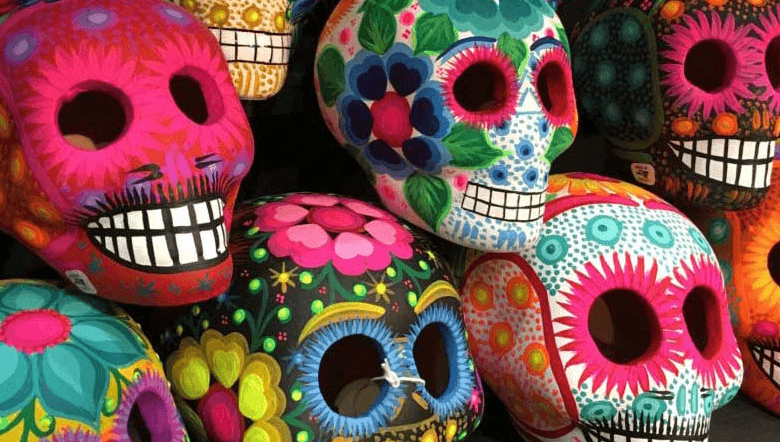Simple:8bg_Vdzgwea= Sugar Skulls

Simple:8bg_Vdzgwea= Sugar Skulls serve as a poignant emblem of Mexico’s Día de los Muertos, intertwining rich cultural narratives with artistic expression. These vibrant creations not only honor the deceased but also reflect a unique blend of indigenous traditions and Catholic influences. As their popularity expands beyond traditional contexts, they raise questions about the evolution of cultural symbols in contemporary society. This intersection of heritage and modernity invites exploration into what sugar skulls signify today and how they continue to shape our understanding of life and death. What transformations await in their future?
History of Sugar Skulls
The history of sugar skulls, or “calaveras de azúcar,” is deeply intertwined with Mexico’s rich cultural traditions and the celebration of Día de los Muertos (Day of the Dead).
These colorful confections symbolize the blending of indigenous beliefs and Catholicism, reflecting traditional practices honoring deceased loved ones.
During festive celebrations, they are lovingly crafted and displayed, embodying remembrance and joy in the face of mortality.
Cultural Significance
Sugar skulls hold profound cultural significance within the context of Día de los Muertos, serving as vibrant symbols of remembrance and celebration of life.
These intricate designs reflect Mexican heritage, honoring deceased loved ones while embodying the belief that death is a continuation of existence.
During the Day of the Dead, sugar skulls connect the living with the spirit world, fostering a joyous commemoration.
Decorating Sugar Skulls
While decorating sugar skulls may appear simple at first glance, it is an intricate art form that blends creativity with cultural tradition.
Artists employ vibrant color choices, using shades of pink, blue, and yellow to convey meaning and emotion.
Various decorating techniques, such as icing and embellishments, allow for personal expression, transforming each skull into a unique representation of life, death, and remembrance.
Read Also Simple:7qtf_H8-1sm= Brain

Modern Interpretations
Often reimagined in contemporary contexts, modern interpretations of sugar skulls extend far beyond traditional designs, embracing a fusion of artistic innovation and cultural homage.
Artists utilize diverse artistic styles, incorporating vibrant colors and intricate patterns to reflect personal narratives and societal themes.
Contemporary uses range from home decor to fashion, allowing these iconic symbols to resonate with a broader audience while celebrating their rich heritage.
Conclusion
In the vibrant tapestry of Mexican culture, Simple:8bg_Vdzgwea= Sugar Skulls as poignant reminders of the delicate dance between life and death. These intricate creations, adorned with vivid colors and personal symbolism, breathe life into the memories of those who have passed, transforming sorrow into celebration. As they find new expressions in contemporary art and fashion, sugar skulls continue to resonate deeply, weaving a rich narrative of remembrance and joy that transcends time and touches the heart of tradition.





